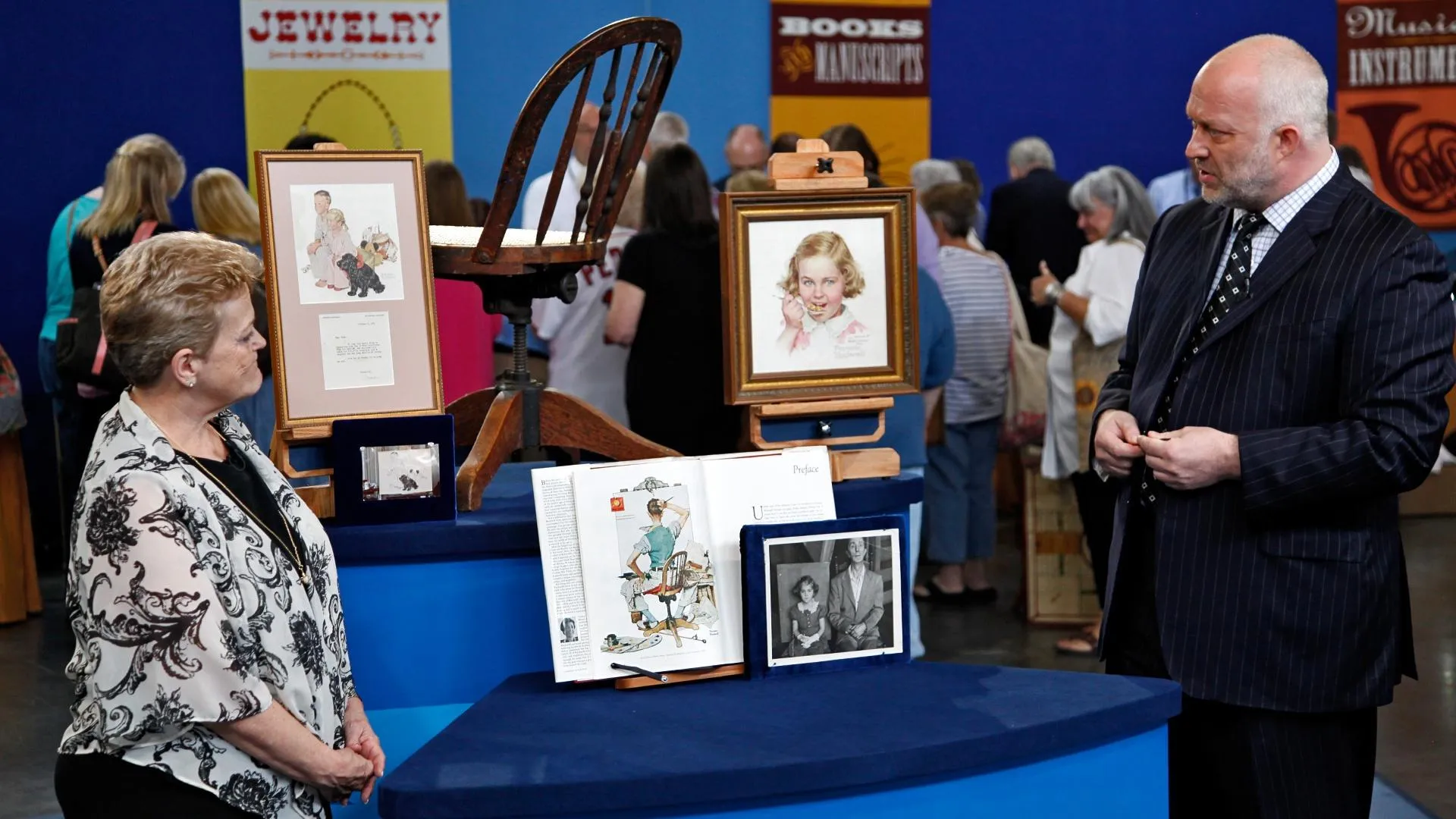GUEST: I got it from a home in New Hampshire, where I live. The people that I bought it from swore it was an Indian headdress, and I don't see how it could be, it's on fabric.
APPRAISER: Well, it's actually a cape. This would have hung down the front on the chest, and this would have hung down towards the back. There are several in museums.
GUEST: Really?
APPRAISER: I think it probably dates to about 1850 to 1860 or 1865. The feathers are guinea fowl and peacock feathers, and probably imported from India. These have been fascinating people for decades, these feathered items, and they always thought it was probably Polynesian or Hawaiian, which the Hawaiians made beautiful feathered objects that were quite rare. And I think for the last 40, 50 years, that's what they've been sold as in the market, as rare Polynesian or Hawaiian capes. But somebody found a painting about 20 years ago and it portrays a council of Western Great Lakes Indians, and there's a tribesman wearing a cape like this.
GUEST: Wow.
APPRAISER: So that kind of changed everybody's mind about where they came from. So where the cape was made they're still debating. How much did you pay for your cape?
GUEST: Oh, under $100.
APPRAISER: At auction, they usually bring about $1,500 to $2,000.
GUEST: Okay.
APPRAISER: I think they're one of the best buys on the market. They're absolutely beautiful articles, and they have a great history. They're very, very fascinating.
GUEST: Well, they'll look good on the wall.
APPRAISER: And they look beautiful on the wall.











